Imagine sitting in the optometrist’s chair, your eyelashes fluttering against a peculiar device as you strain to keep your eyes wide open. That unusual piece of equipment is a tonometer, a crucial tool in your eye health toolkit. As you embark on this journey to understanding tonometers, remember that it’s not rocket science, but simple eye science!
“Tonometers are the silent heroes of eye health, helping identify conditions even before they progress into serious issues. They ensure the pressure in our eyes is just right, not too high or too low, laying the foundation for clear and comfortable vision.”
Join us as we delve into the world of tonometers, their importance, how they work, and their role in diagnosing conditions like glaucoma. As you’ll see, tonometry offers a window into the health of your eyes – a window that could help protect your vision in the long run.
Embarking on a journey to understand tonometry, you’ll soon uncover it’s a crucial diagnostic method that revolves around measuring the intraocular pressure (IOP). This essential procedure is a cornerstone in routine eye examinations, offering insight into conditions such as glaucoma.
Several tonometers are at the disposal of an ophthalmologist, each employing various methods for accurate IOP measurement. Let’s break down a few commonly used tonometers and their operating principles.
One such device is the Air-puff tonometer. This device applies principles of light detection and leverage air pressure to measure the IOP. Here, the instrument directs a puff of air at the cornea, and an optical system catches the moment of maximum light detection. The point being, when the cornea is flattened by the air puff, it’s this exact moment that provides precise IOP measurements.
Moving on to another prominent tonometer, the Goldmann Applanation Tonometer (GAT). This instrument uses a simple contact method to ascertain IOP. It works by flattening a small region of the cornea, then correlating the force needed for flatting with the pressure within the eye. In practical terms, more force implies intra higherocular pressure.
Another instrument, the remarkably resilient Schiotz tonometer, utilizes a series of standard weights to indent the cornea for determining IOP. This device’s innovative method has stood the test of time, remaining effective since its introduction in 1905.
Transpalpebral Tonometer is another type, that measures IOP across the eyelid, allowing more comfort for the patient while providing accurate measurements.
And finally, Intracameral cannulation underpinned by the Principles of Clinical Tonometry Manometry offers the most exact measurement of true IOP inside the eye.
Each of these tonometers and their various methods lay testament to the constant evolution of IOP measurement. Remember, these are only a few examples amidst numerous others that continue to enrich the field of tonometry, offering invaluable assistance in preserving ocular health.
Let’s now dig deeper into the vibrant universe of tonometers by shedding light on some of the standout devices. These unique types of tonometers distinguish themselves with unique features, ample advantages, and specific contexts of use.
| Tonometer | Description |
|---|---|
| Diaton Tonometer | The Diaton Tonometer performs its task by measuring intraocular pressure (IOP) through the eyelid, eliminating the need for corneal contact and preventing cross-infections. This makes the process comfortable, safe, and efficient. |
| Icare tonometer | Recognized for its ‘rebound’ technology, whereby it takes quick measurements on corneal impact with minimum contact, enhancing patient comfort substantially. |
| Perkins Tonometer | Delivers effective results under challenging situations, especially where patients cannot sit upright for the examination. Its ‘applanation’ principle borrows from the Goldmann Tonometer design and allows the device to be portable and adaptable. |
| Pascal Dynamic Contour Tonometer | Known for its formidable consistency. It minimises the possibility of inter and intraobserver variations which can skew the accuracy of readings. It adds another layer of robustness to tonometry methods. |
| Schiotz Tonometer | Introduced back in 1905, uses a series of standard weights to indent the cornea for determining IOP. Even with more advanced tonometers now available, Schiotz continues to showcase its historical significance and functionality. |
| Draeger Applanation Tonometer | Shares many commonalities with the Goldmann and Perkins applanators, but stands out for its electric motor and distinctive biprism. Its portability makes it useful in a range of similar situations to Perkins. |
The future of tonometer technology is as promising as it is interesting. With continuous developments in the field, you can expect to see some impressive advancements that not only improve the accuracy of intraocular pressure (IOP) measurements but also enhance patient comfort.
Take the Diaton Tonometer, for instance. It’s cleverly designed to measure IOP through the eyelid — a method known as transpalpebral tonometry. The key advantage? It provides highly accurate readings without any contact with the cornea, significantly enhancing patient comfort during the procedure.
Another innovative device making waves in eye care is the Rebound Tonometer. This compact device uses a rapid response probe to gently infer pressure from the cornea’s resistance to a brief, mild mechanical impact. It’s a prime example of how technology is reducing trauma and significantly improving the patient experience during eye pressure assessments.
Speaking of progress, let’s not forget about the newly emerged Mackay Marg Tonometer. This innovative tool applanates the cornea with a probe, offering pressure curve readings. Its electronic demeanour disrupts traditional tonometry with much-needed technology infusion.
The dynamic Pascal Dynamic Contour Tonometer, on the other hand, measures IOP through pulsatile fluctuations using a piezoelectric sensor embedded in its tip. Innovative, isn’t it?
Now, tonometers like the Non-contact Tonometry, Ocular Response Analyser, Tonopen Pneumatic Tonometer, Dynamic Contour Tonometer, Pascal Rebound Tonometer and Transpalpebral Tonometer represent newer breeds of tonometers that are paving the way for more sophisticated eye pressure assessment.
Ultimately, in any clinical setting, the role of applanation tonometry in diagnosing, managing, and following up with patients remains indispensable. Technology can always advance, but the essence of care lies in the way it’s executed. The future of tonometry is indeed exciting, but always remember that the success of any procedure comes down to the skilled hand guiding the device.
Tonometry, specifically through the use of the Goldmann Applanation Tonometer (GAT), brings with it a host of benefits. Primarily, it provides a reliable and standard method for measuring Intraocular Pressure (IOP), playing a critical role in the early identification and management of eye conditions such as glaucoma. GAT’s enduring preference is a testament to its reliability and clinical precision.
However, using the GAT method also has its pitfalls. It’s a contact technique that requires the use of fluorescein and local topical anesthesia, both of which can present complications for patients with certain eye conditions or those who are intolerant to these substances. It also necessitates the proper mounting on a slit lamp and performing tonometry in an upright position, technical aspects that may contribute to variation in IOP measurements.
On the other side of the spectrum, we have Non-Contact Tonometry (NCT). Its advantages lie in its simplicity and speed, eliminating the need for fluorescein or anesthetic drops. That said, its application for managing elevated IOP and glaucoma in routine clinical settings is not typically recommended, thus limiting its broader use.
It’s clear that both types of tonometry exhibit strengths and drawbacks. Therefore, careful consideration, understanding of the specific patient’s conditions, and proper training are crucial when choosing the most suitable method for measuring IOP.
| Type of Tonometry | Method | Advantages | Limitations |
|---|---|---|---|
| Goldmann Applanation Tonometry (GAT) | Requires mounting on a slit lamp, tonometry in an upright position, use of topical anesthesia and fluorescein | Most widely accepted method for measuring IOP. Accurate and reproducible measurements | Influenced by factors such as corneal curvature, central corneal thickness, corneal surface abnormalities, and corneal surgeries |
| Alternative Tonometry | Alternative methods that can be considered in select cases | Can be used when GAT is not suitable or in the presence of certain contraindications | May not be as accurate or reliable as GAT. Requires additional training for accurate usage |
Goldmann Applanation Tonometry (GAT), commonly recognized as the ‘gold standard’ for measuring intraocular pressure (IOP) in routine clinical management, requires both meticulous training and effective means of communication. The process involves mounting the device into a slit lamp for usage while in an upright position, with the incorporation of topical anesthesia and fluorescein to assure accuracy.
As a contact applanation tonometer, GAT requires the user to make physical contact with the patient’s eye. This characteristic makes it very accurate, but it also leaves patients vulnerable to certain complications. These complications may arise in situations where there are factors such as corneal curvature, issues with the central corneal thickness, surficial corneal abnormalities, or recent corneal surgeries. Other aspects to consider are more severe conditions, like eye abrasions, trauma, globe rupture, signs of infection, or intolerance to fluorescein or local anesthetic drops.
When direct contact tonometers, like GAT and Perkins, are not suitable or not recommended, non-contact tonometry (NCT) comes into play. NCT, though not typically recommended for routine clinical management of patients with elevated IOP and glaucoma, offers certain advantages over contact tonometry methods.
Notably, it is a rapid and straightforward procedure that doesn’t necessitate local anesthesia drops or fluorescein. However, it is crucial to understand that while convenient, NCT’s accuracy may not reach the same level as GAT, particularly in routine clinical settings.
Regardless of the method chosen, tonometry plays a critical role in assessing ocular health and diagnosing ocular diseases. Accuracy in IOP measurements is not just about having the correct tools, but also about understanding and communicating properly, factoring in each patient’s unique situation.
Let’s face it, accuracy matters in virtually all aspects of medical diagnosis, and tonometry is no exception. The call for precise and reproducible intraocular pressure (IOP) measurements is well heard amongst clinicians. Why? It’s couched in the critical role these readings play in diagnosing, screening, and managing conditions such as glaucoma. But it’s not just about getting the number right, assurance is needed that the instrument is well calibrated and precise.
As you start to navigate the world of tonometry, you’ll realize that the process is affected by multiple factors. Be it the disease state or patient’s mobility, these elements influence the obtainability of accurate IOP readings. And yes, diseases of the cornea like corneal surface abnormalities, central corneal thickness variances, and corneal surgeries, all add a layer of complexity to the process.
Learning how to mount a Goldmann Applanation Tonometer onto a slit lamp, tonometry in an upright position, not to mention the use of topical anesthesia and fluorescein, requires a high level of expertise for accuracy. But take heart! A little practice may be all you need to master it. And here’s a pro tip: always check the cornea after taking an IOP measurement, it’s a trove of valuable information for learning more about techniques.
Fret not, you’re not left to face these challenges alone! An interprofessional team, including nursing, allied health, and other staff, works together to maintain tonometers. Thanks to them, you can count on your instruments to deliver precise and dependable IOP measurements, which is critical when managing glaucoma and other ophthalmic conditions.
Also, let’s not forget the important role of communication in this equation. Properly explaining the process to a patient can significantly help in obtaining accurate measurements. After all, nobody likes surprises, especially when it involves their eye health.
The bottom line is, understanding the nuances of tonometry and fostering solid communication skills are not just nice-to-haves, but a must for all healthcare providers. So go ahead, dive into the fascinating pursuit of tonometry, where precision meets human interaction for delivering top-notch patient care.
Tonometry is an essential part of routine eye check-ups. It enables the measurement of intraocular pressure (IOP) inside the eye, which is vital in the diagnosis, management and follow-up of patients with various ophthalmic conditions, including glaucoma.
Applanation tonometry is one of the methods employed in tonometry. It refers to the process wherein a small flat-tipped probe gently touches the cornea to assess intraocular pressure. This methodology is often lauded for its accuracy and dependability.
A range of tonometers exists to suit different situations and patient requirements. The most common types include Goldmann applanation tonometers, Icare tonometers, and non-contact or air-puff tonometers, each with its unique features and methodologies.
Effective management of tonometers involves regular maintenance and calibration to ensure accurate readings. An interprofessional team, consisting of nursing staff, allied health professionals and others, often takes responsibility for this to ensure precise IOP measurements.
Tonometry provides vital insights into a patient’s intraocular pressure and can aid in detecting eye diseases like glaucoma early. However, it may be uncomfortable for some patients, and external factors like corneal thickness can potentially affect its accuracy.
In conclusion, mastering the art of tonometry, notably with a tool like the Goldmann applanation tonometer (GAT), offers enormous potential in the early detection and effective tracking of vision-threatening conditions. Tonometers, offering commendable portability, allow eye care professionals to carry out necessary checks wherever required and with ease.
These devices are not just intended for glass-walled clinical environments, but also in more rudimentary setups and field screenings. The broad agreement of measurements taken via tonometry with those of the GAT brings forth a wide base of reliability in its readings.
As we stand on the cusp of rapid technological advancement, we can certainly look forward to further improvements in tonometry. This could mean even more accurate intraocular pressure readings, ensuring millions of individuals retain their vision and quality of life. The future of eye care beckons, and tonometry will be an integral part of it.
Moving forward, it’s crucial to stress on the importance of not only using these devices but also managing them effectively. After all, the accurate measurement of IOP stands as the backbone of preventing and managing a number of eye conditions.
So, dear readers, continue expanding your knowledge libraries, dig into millions of documents, e-books, and audiobooks to grasp this versatile and vital tool in eye care better. Let’s stride together towards a future where no sight is lost to preventable or manageable conditions!
VISIT OUR SHOP
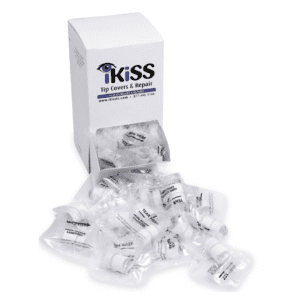
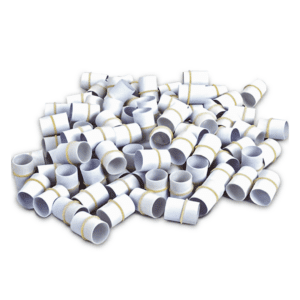
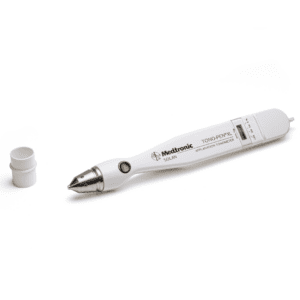
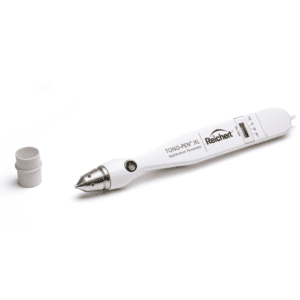
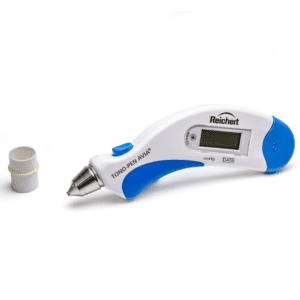
iKiSS is the go-to provider for top-quality refurbished Tono-Pen® Tonometers, Tono-Pen AVIA® Tonometers, Slit Lamps, and Phoropters, offering substantial savings of up to 40%.